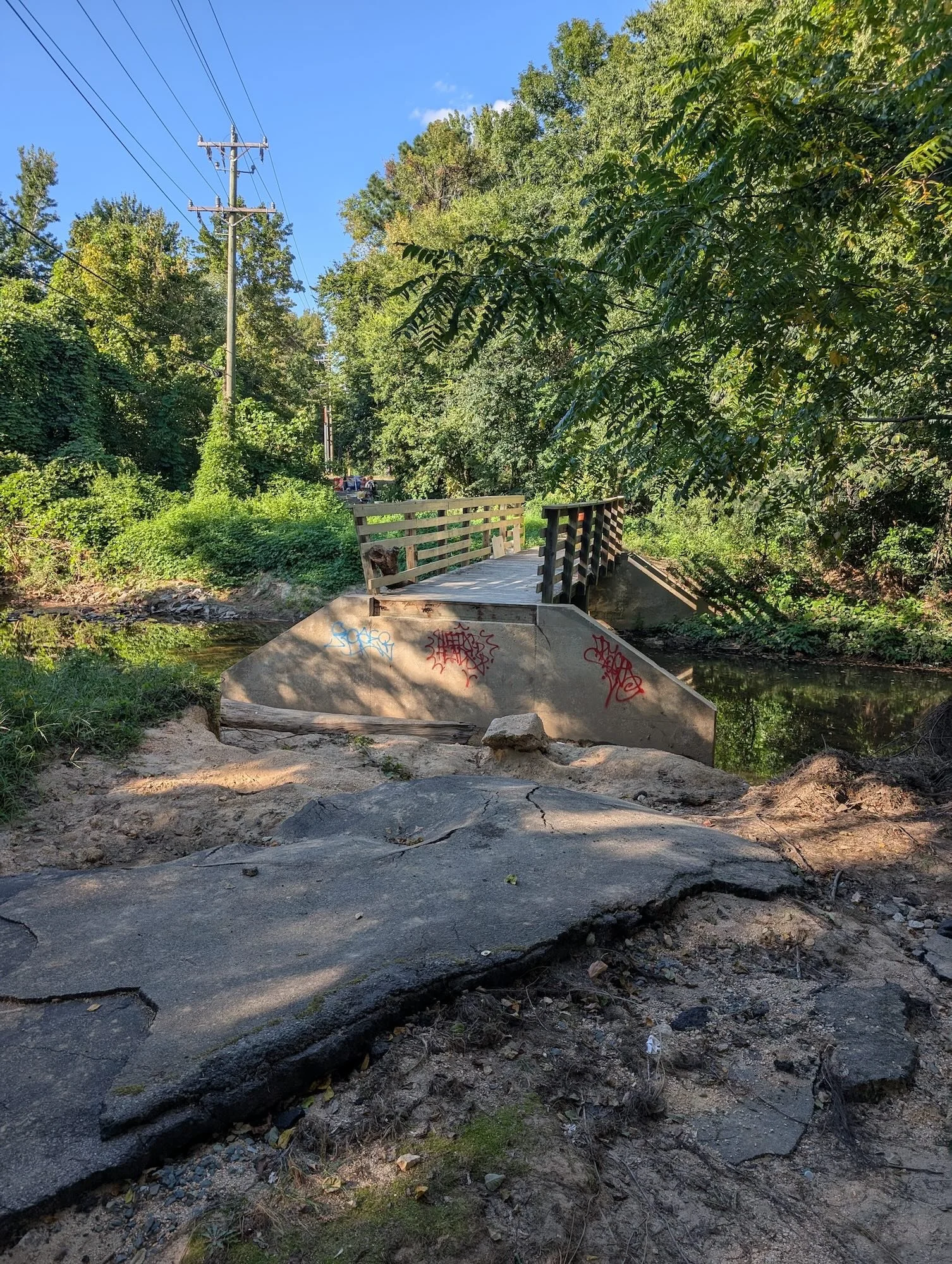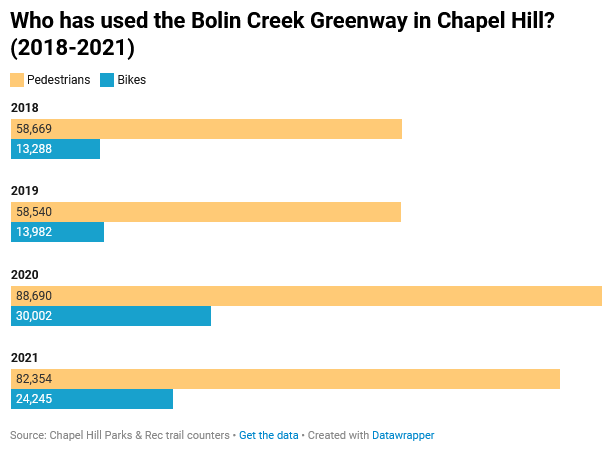Keep Chapel Hill Moving: Safe Detours Needed for Trails and Sidepaths
Updated September 17, 2025 to reflect additional learnings and our meeting with Town staff on Sept 3
Tropical Storm Chantal left a mark on Chapel Hill, flooding homes, disrupting businesses, and damaging the infrastructure we depend on every day. Among the hardest hit transportation infrastructure was our biking and walking connections: large sections of the Bolin Creek Trail, Morgan Creek Trail, and the Fordham sidepath are closed, with repairs expected to take anywhere from 6 to 18 months.
For many residents, these paths and sidewalks are essential routes to school, work, errands, and community life. With closures stretching into the better part of a year, we must ensure that safe, accessible alternatives are in place.
Three Priorities for Detours
Shift CHC is calling on the Town of Chapel Hill and NCDOT to act quickly with simple, low-cost solutions that can be deployed while long-term repairs are underway. These short-term fixes are a chance to test approaches the Town has already discussed, giving us real-world lessons for future projects:
Quick, Low-Cost Improvements
Safe detours along Estes Drive, E Franklin, and MLK can be created with simple steps: clearing debris from sidewalks, trimming overgrown vegetation, adding temporary curb ramps, and placing signs to alert drivers to expect people biking and walking. These fixes are inexpensive and can be deployed immediately.State Partnership Along MLK
Reallocating a lane on MLK for a temporary barrier-protected multiuse path – which requires coordination with NCDOT – would provide a safe, direct connection between neighborhoods, the library, downtown, and the University Place area. The Town successfully implemented this type of quick-build project on MLK adjacent to the YMCA in connection with recent intersection and sidewalk improvements.Urgent Fix for Fordham Sidepath Gap
The damage to the Fordham sidepath and bridge leaves residents with no safe detour today. Without action, people will be forced to walk or bike along 15-501, one of the most dangerous corridors in town. This situation may require a quick build of a temporary bridge extension, and it cannot wait. The pictures below show the current condition of the trail (left) and an AI illustration of what the extension could look like (right).
Why This Matters
Without safe alternatives, residents are left with difficult choices: walking or biking along high-speed roads, paying for driving or ride-hailing, or spending extra time on indirect transit routes. By contrast, a few well-placed detours, including quick fixes, NCDOT partnerships, and urgent engineering solutions, could allow people to safely keep walking or biking.
A Collaborative Opportunity
This storm is more than a setback; it’s an opportunity to demonstrate what Chapel Hill stands for. By prioritizing quick, cost-effective detours across all three priorities, we can:
Keep people moving safely
Reduce pressure on already congested roads
Show how creative, flexible solutions can serve our community
Have you been impacted?
Share your story about how these closures affect your daily life in the comments or directly on our Contact Us page.
Every voice helps show the Town and NCDOT that safe detours aren’t optional, they’re essential!




